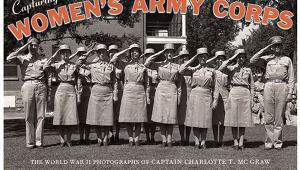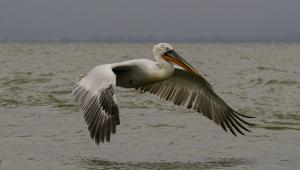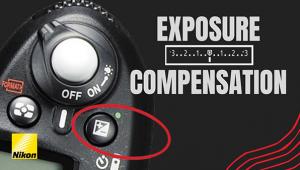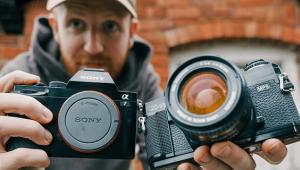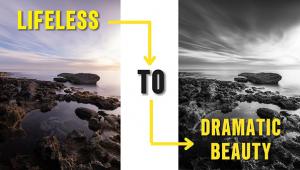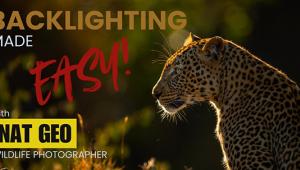Holiday Books; For The Digital Photographer Page 2
Real World Camera Raw with Adobe Photoshop CS2; by Bruce
Fraser; Peachpit Press; 316 pages; $39.99; softbound (ISBN 0-321-33409-4)
Producing "version" books is a challenge. Sometimes the writer and
publisher take so long to get a new book out the program is old news or, worse,
a new version is around the corner. Not so with Bruce Fraser, who rushed Real
World Camera Raw to print shortly after Adobe's official announcement.
The book is not only current, it's comprehensive and more complete than
his last one, this time including information on the DNG (Digital Negative)
format and Adobe Bridge that was introduced with Photoshop CS2. The book's
screen shots are Mac OS-centric, which hopefully won't offend Windows
users, but the text contains information on using both versions. Illustrations
are plentiful, and while the photography won't win any awards, this book
is about the technical size of raw image making and it attains that goal remarkably
well.
 |
Photoshop CS2 Workflow; by Tim Grey; Sybex Inc.; 290 pages;
$29.99; softbound (ISBN 0-7821-4396-2)
"Workflow" may be the hottest buzzword for digital imagers but it's
hardly new. Film photographers had a workflow, although few called it that,
and all had its own devotees who pursued perfection with a religious-like zeal.
What is Adams' Zone System if not workflow? But here Tim Grey has put
together a good if somewhat overpriced book on digital workflow. The images
and design may be somewhat pedestrian, but the book is saved by text that takes
you painstakingly from downloading and sorting through output processing. An
appendix includes a check list that, if the book's designer hadn't
been too lazy (or underpaid) to make look like a real check list, would have
been a useful tool.
 |
Pro Digital Photographer's Handbook; by Michael Freeman;
Lark Books; 318 pages; $29.99; softbound plus CD (ISBN 1-57990-632-X)
The proliferation of photography books by UK authors seems disproportionate
to the two countries' populations, but not to the photo book industry.
This is a fact of publishing life but it still bugs me. Notwithstanding my personal
screed, Lark Books sure knows how to package a photo book, showing almost every
other publisher's offerings that I've reviewed this year a thing
or two about design, reproduction, and overall material quality. I could have
done without the section on image sensors (and for the first 100 pages for that
matter), but Pro Digital Photographer's Handbook is a good book for the
film-based pro contemplating moving to digital capture. It's filled with
real-world images, photographic situations, and advice that provides a basis
for what will be a busy 18 months of climbing the digital learning curve.
 |
Total Digital Photography: The Shoot to Print Workflow Handbook;
by Serge Timacheff and David Karlins; Wiley Publishing; 352 pages; $29.99; softbound
(ISBN 0-7645-6952-X)
While somewhat text heavy and filled with illustrations that could hardly be
called great photography, the two writers nevertheless manage to pack lots of
worthwhile information between this book's covers. It all starts at the
beginning with a useful description of what is digital "workflow,"
including a flow chart of the process. Don't let the mediocre reproduction
and uninspired layout deter you from buying this book. The authors take you
on a wonderful digital journey, beginning with a look at a digital photo shoot
and taking you through the process of editing and optimization to display and
distribution. The last chapter, "Fighting Image Mortality," is especially
useful, taking a long hard look at the unpleasant realities of what's
needed to ensure that your images--in both print and digital formats--will
last for future generations.
 |
A Comprehensive Guide to Digital Glamour Photography; by
Duncan Evans; AVA Publishing; 144 pages; $22.95; softbound (ISBN 2-88479-047-0)
If you're even mildly interested in glamour photography, this small book
is for you. It has a modular layout that lets you hone in on specific camera
or digital darkroom techniques that cover a few pages each. You can read it
from cover to cover (my suggestion) or jump into sections such as "Shadow
Effects" or "Small Spaces." The photographs, created by many
different and talented photographers, are stunning and beautifully reproduced,
but this is a book about glamour photography and does contain tasteful nudity.
If that bothers you, you might want to skip it. The rest of us will find that
Digital Glamour Photography is a comprehensive course in using digital cameras--even
point-and-shoot digicams--to create glamour imagery.
 |
A Comprehensive Guide to Digital Black & White Photography;
by John Clements; AVA Publishing; 144 pages; $22.95; softbound (ISBN 2-88479-056-X)
It's a challenge to be comprehensive in 144 pages, but John Clements has
done a remarkable job. After the briefest of introductions, Clements has you
deep inside Photoshop's Channel Mixer creating monochrome images with
the best of them. He uses the same no-nonsense style combined with excellent
screen shots to show you how to do the most amazing toning using an effect that
Clements calls Sepia II. This is followed by tips and techniques for creating
faux infrared effects that have to be seen, then tried. The subject matter throughout
the book is varied and is populated with wonderful images of landscapes, wildlife,
portraits, and the occasional tasteful nude. There is also a section called
"The Digital Zone System" that should make fans of Saint Ansel whoop
with delight, or cringe. I liked it.
 |
Digital Nature Photography Closeup; by Jon Cox; Amphoto;
176 pages; $24.95; softbound (ISBN 0-8174-3674-X)
This is a nice book on nature photography that seamlessly weaves in digital
techniques along with close-up photography techniques that work no matter what
kind of camera you use. The book is composed of easily digestible sections with
topics such as "Focusing for Close-ups." Unless you have practiced
this particular discipline you will find it is a bit more complicated than working
at a normal focusing distance. Jon Cox's explanatory text is clear, concise,
and fun, and although I am personally not a fan of macro photography of bugs,
those who are will find plenty to enjoy. Bugs aside, and I don't consider
butterflies to be bugs, the large colorful illustrations that populate the book
make this an enjoyable and pleasant read.
 |
- Log in or register to post comments



